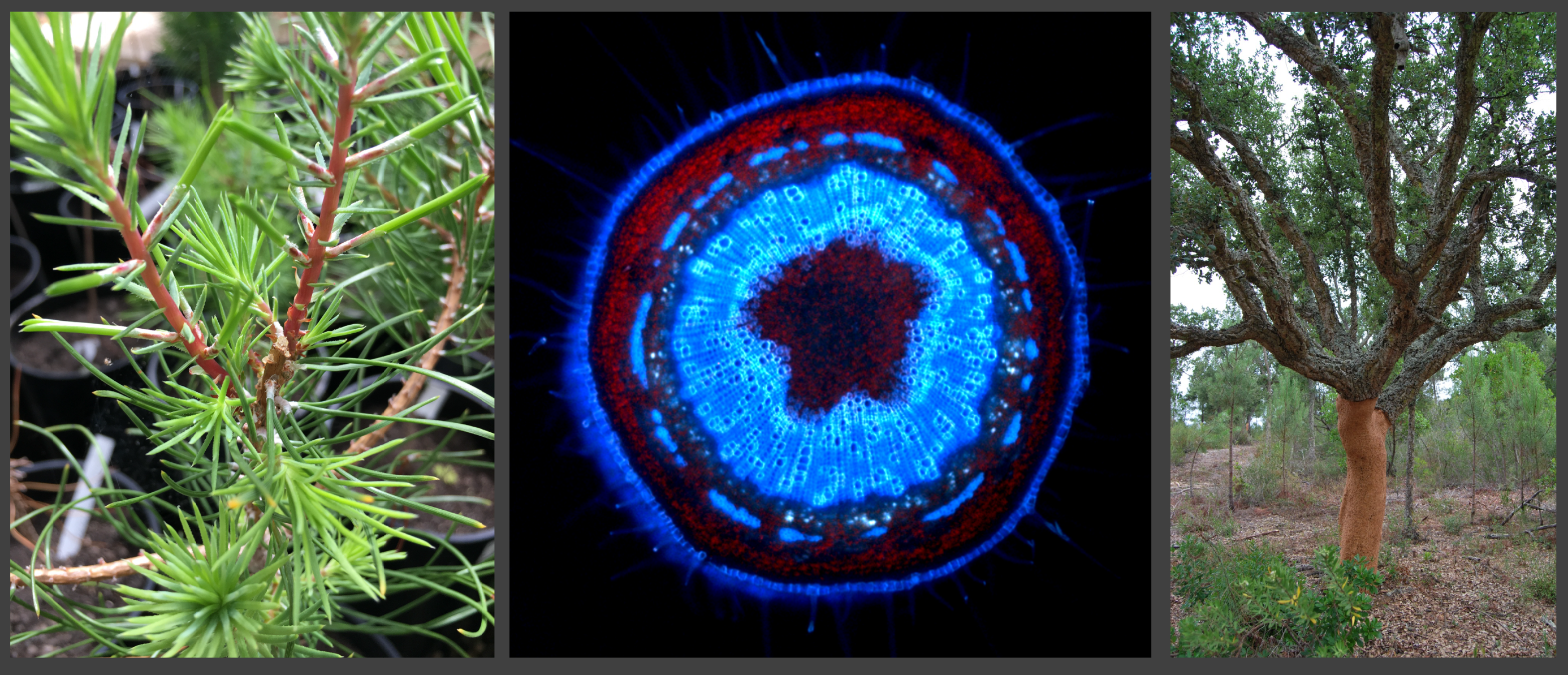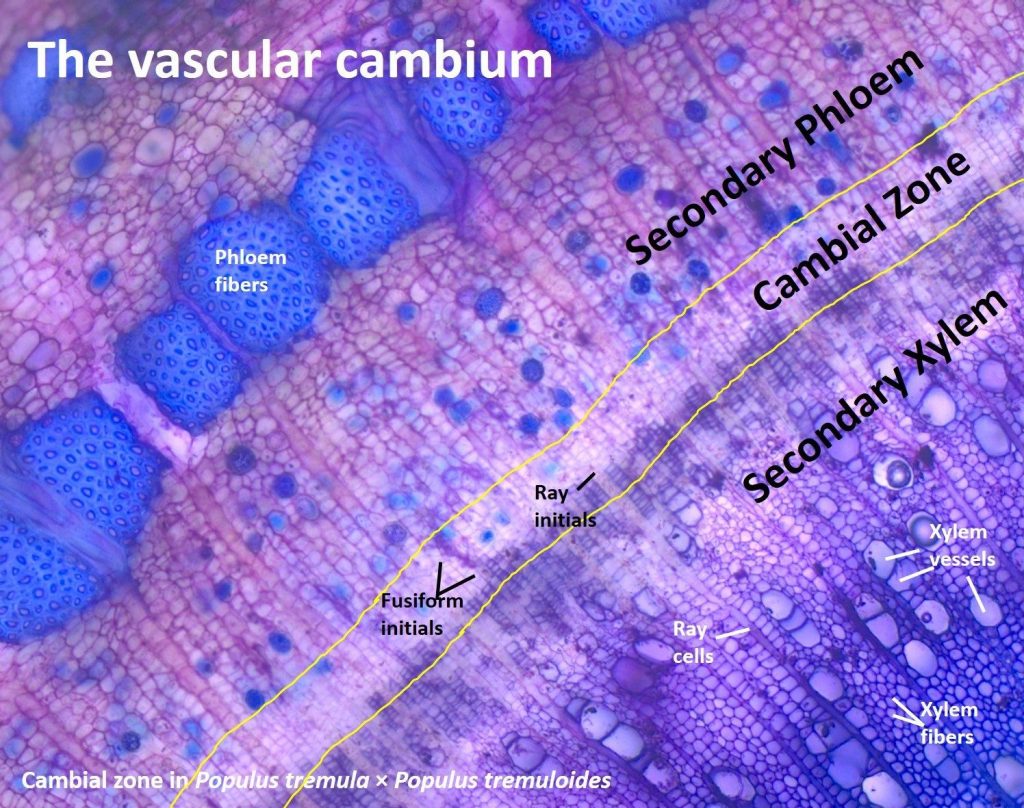
[rev_slider alias=”secondary-growth”]
Secondary or lateral growth, is the biological process that confers girth to stems and roots in plants, which is essential to structurally sustain organs, for water and nutrients transport and continuous plant growth. This process occurs at the expense of the cell division activity in two main lateral meristems – the vascular cambium and the cork cambium. From the activity of cambia one of the main sources of biomass on Earth, wood, is produced. Given its economic, environmental and societal relevance one of the major objectives of our work is to use molecular genetics to find new regulators of wood and cork formation.

The vascular cambium, a secondary lateral meristem in tree stems, produces secondary phloem towards the outside and secondary xylem (wood) towards the inside. In the middle of the vascular cambium reside the stem cells that are the meristematic cells from which the phloem and xylem precursor cells originate. Since the exact location of the stem cells is not known, this region is also commonly named cambial zone. Xylem development initiates with active cambial cell division, followed by rapid cell expansion and deposition of secondary cell wall and programmed cell death. The xylem cell types in Populus wood (ray parenchymatic living cells, xylem vessel elements and xylem fibers) are indicated. The cork cell layers cover the surface of the stem, which are produced by the activity of the cork cambium, the other secondary lateral meristem in tree stems (Milhinhos and Miguel, 2013)
To study secondary growth in long-living trees is quite a challenge, therefore we take advantage of tools already available for model plants like the herbaceous Arabidopsis thaliana and hybrid-aspen trees (Populus tremula x Populus tremuloides) to understand the molecular mechanisms that are involved in xylem development. We use Arabidopsis for the genetics because it is much easier to manipulate and we can grow up to 8 generations a year; and use aspen to validate our findings in a tree.
To study secondary growth tissues we make use of:
– Forward and Reverse Genetics (phenotyping, GWAS, genetic engineering of Arabidopsis and aspen plants);
– Molecular biology techniques (Nucleic acids purification, Molecular cloning, Polymerase chain reaction (PCR), Real-time qPCR, Gel electrophoresis, Macromolecule blotting and probing, in situ mRNA hybridization);
– Microscopy (Confocal and light microscopy)
– Bioinformatics (RNAseq)
